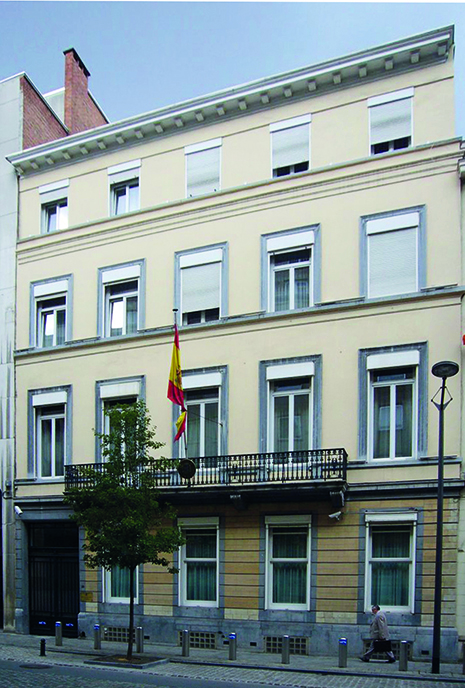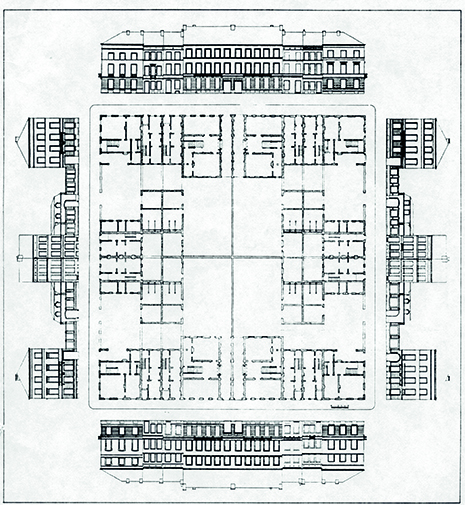Description
In the early 19th century, the replacement of the ancient ramparts by boulevards was the starting point for the Quartier Léopold, conceived as an extension of the neighbouring Park of Brussels. In 1837, together with an urban-planning proposal, Suys designed an ideal city block. The block presents a clear hierarchy with a continuous building front on Rue Belliard and Rue Montoyer. It also offers a socio-spatial mix by combining different plot widths: 15 and 13 m for patrician mansions in the centre and the corners of the block, and 6 m for more modest houses between them. The mansions are characterised by a carriage entrance leading to an exterior space where stables and outbuildings can be found.
The modest houses accommodate a double division: three rooms in a row in the wide bay and circulation in the narrow bay. All the buildings are three storeys high with gable roofs. The façades of the mansions are quite ornate, with blue-limestone Bases and window frames, and continuous balconies on the first floor. The more modest houses are simply rendered in white on a blue-limestone base. Today the area, better known as the European District, has fallen prey to property speculation and only two houses of the initial block remain, i.e. Rue Montoyer 26 and 28; the others have been demolished.
 Exterior view
Exterior view
 Historic elevations and plans
Historic elevations and plans
Originally published in: Gérald Ledent, Alessandro Porotto, Brussels Housing. Atlas of Residential Building Types, Birkhäuser, 2023.